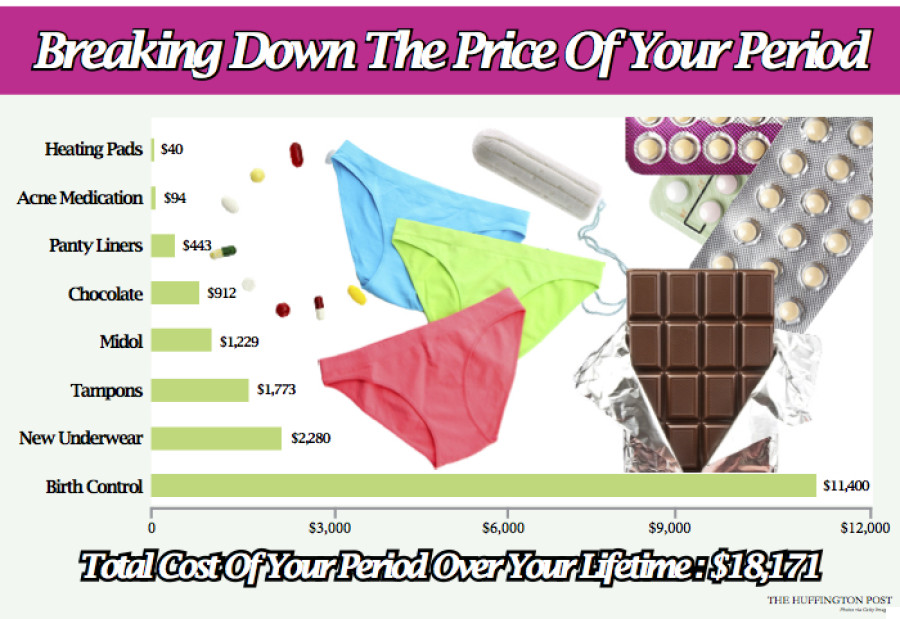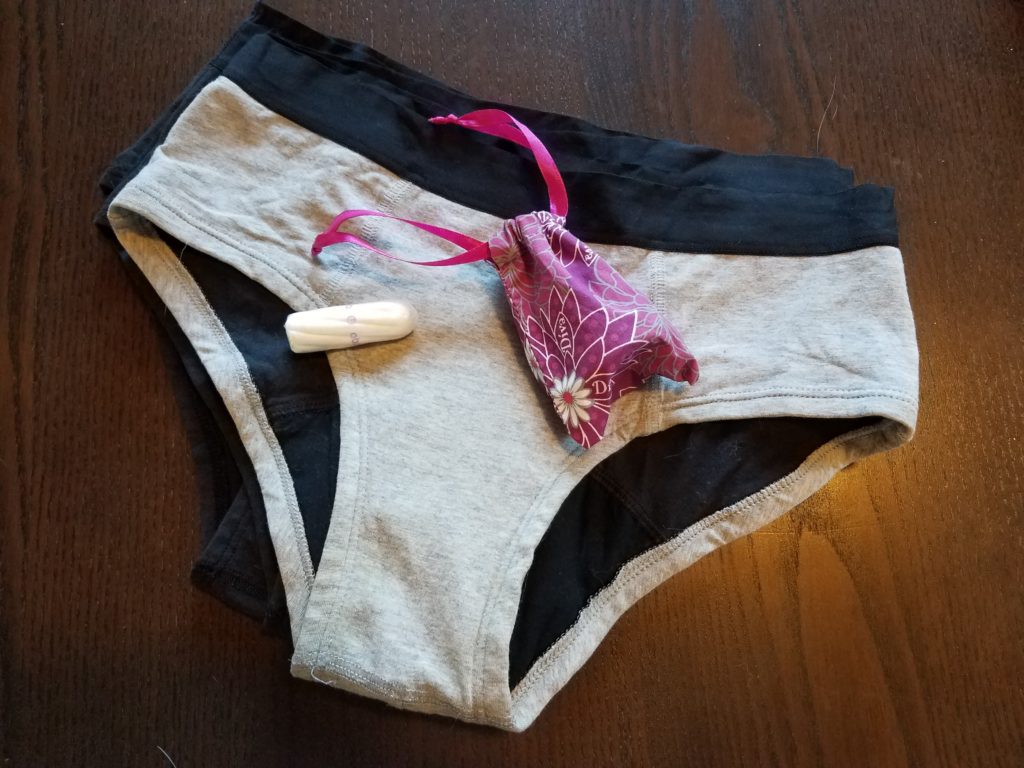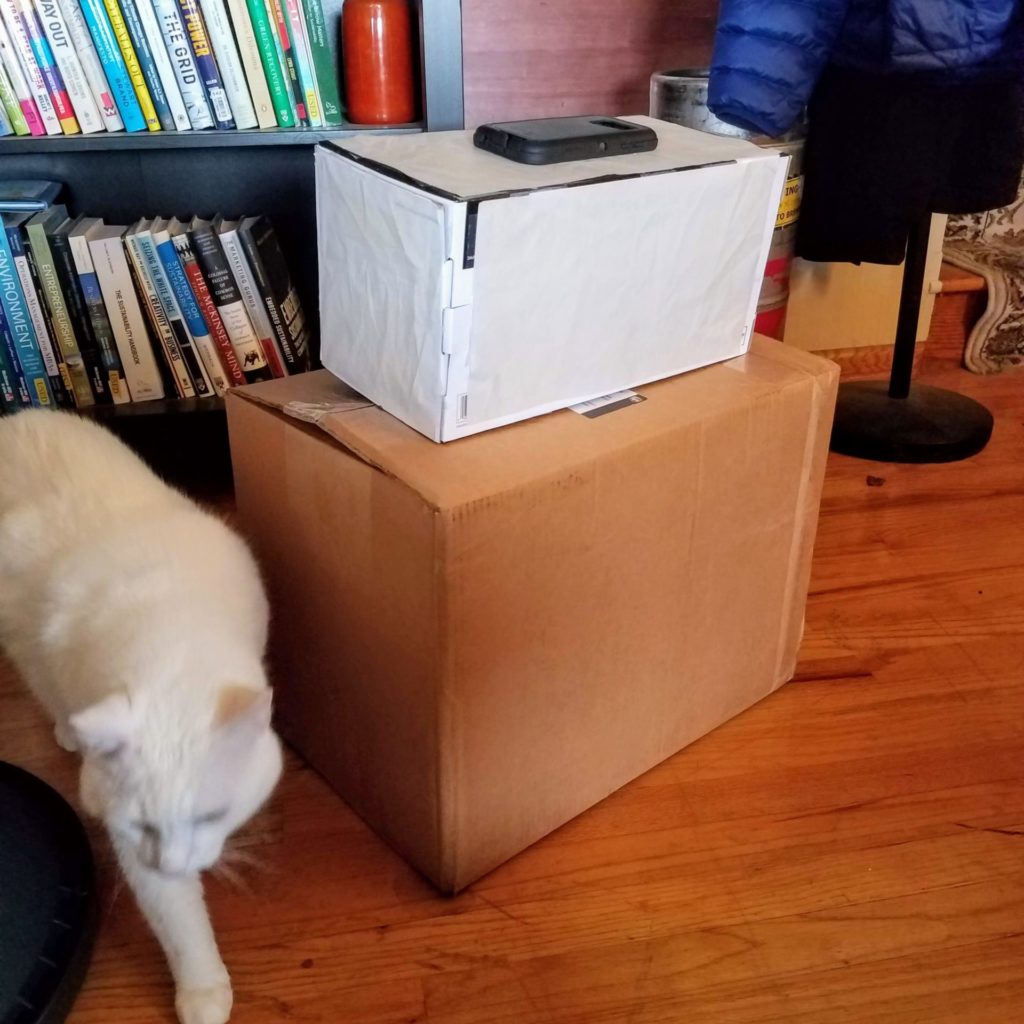Part 3 – Reusable Products
A little over a year ago I enrolled in a trial for an experimental copper IUD that is supposed to be smaller and less uncomfortable than the one model currently available in the US, but just as effective. I was thrilled to be part of a study that could help get another, possibly better, option on the market for American women. The only downside is that I am not longer allowed to use my menstrual cup for the duration of the three-year study.
I loved and miss using my menstrual cup, not only because it was so comfortable and reliable I would forget about it, but because it generated no waste – nothing to throw away every month. At the end of its life (stated as 10 years), I will cut it up into small pieces and throw those away, but the volume of that waste will be miniscule compared to what I’m currently throwing away in tampons.
It was just about a year ago that I embarked on the Zero-Waste Lent adventure that in part influenced me to launch this blog, and I started looking into the numbers around menstrual products, specifically the difference between single-use vs. reusable items. There was too much information to put into a single post, so I decided to hold onto it for a longer series in the future.
I haven’t had the time to go into a full life cycle analysis of the materials across all product materials, but I would love to. (We had access to a fantastic Life Cycle Analysis software in grad school, and I would love to get my hands on it again – both to play and to provide more informed content in this blog.) What I have done is calculate the sheer volume of one lifetime’s worth of single-use products, which we looked at last week, and now the reusable equivalents.
Once again, I would like to remind people that I am here simply to share information about my research and trials. I am not telling anyone what products to use or what decisions to make. This post should be a good reminder that reusable products are NOT zero-waste, though they do produce LESS waste (by volume), and some produce less waste than others. I understand that some people are not able to use some of these products – I am in that boat myself. But for people who could use them and don’t, I would encourage you to consider trying something new if you are physically and financially able.

Menstrual Cup
The menstrual cup is exactly what it sounds like: a silicone cup that sits in the vagina and collects menstrual blood. It needs to be emptied a couple times a day, which is quite easy once you get the hang of it – I have done this successfully at work and in public bathrooms. It comes in several different brands and models. Finding a good fit is important, so if you decide to get one, I would recommend reading reviews before buying.
The lifetime waste calculations we did last week resulted in a 2.11 cubic foot cube of densely packed applicator-free tampons, roughly the size of our microwave. That volume increases to a 3.16 cubic foot cube for someone using applicators to insert the tampons, similar to the dimensions of a mini freezer.
The equivalent size of 4 menstrual cups (10-year useful life over 35 years of menstruation) comes out to 7.5 cubic inches, less than the volume of my cell phone case. That’s 0.14% the size of the equivalent tampon waste.
While I know that the $30 upfront cost of a cup[2] can be daunting for someone with tight finances, the $120 spent over a lifetime is a small amount compared to the $1,300 for a lifetime of tampons.[3]
Period Panties
Period panties are designed to absorb menstrual blood like a maxi pad would. There are some brands that function more like a shield to protect your clothing, but aren’t designed to absorb significant amounts of blood. If you’re looking to buy them, make sure the company is giving you an equivalent number of tampons when talking about absorption qualities.

The ones I have are made from several layers of materials that serve different purposes. I requested some detail on the breakdown of materials, and I was not disappointed:
- Innermost layer: 95% organic cotton, 5% elastane
- Middle breathable PUL: 95% cotton, 5% elastane
- Outermost layer of original fabric styles: 89% nylon, 11% elastane
- Outermost layer of organic cotton styles: 95% organic cotton, 5% elastane
- The moisture wicking layer has a non-migratory, ionic silver application to manage the odor
Elastane is the generic term used for stretchy fabrics such as Lycra and Spandex. “PUL” refers to polyurethane laminate, which is a waterproof fabric – it’s what helps to keep the blood from leaking through the panties to the rest of your clothes.
The volume of maxi pads we calculated last week for a lifetime of menstruation came out to 2.76 cubic feet, about halfway in between the size of the microwave and the mini freezer. Keep in mind, this is a densely-packed cube – there are 7,280 pads in there.
As for the website for the period panties I use, the statistics state that you should have 3 pairs in rotation, and their lifetime is 2 years. I don’t know if they will last longer than 2 years, but I do know that I needed more than 3 pairs when I did my zero-waste challenge last year. The instructions say to back them up with a tampon or cup on heavy flow days, but I managed – with more effort than I was willing to expend – to make it through without. It involved switching out, rinsing, and drying underwear every 6 hours on my heavy days. That is not a feasible long-term plan unless you have the ability to stay home during the height of your period.
(Note: Doubling the number of panties in rotation would make the process a little more manageable, and it also might double the lifetime of each garment, since it’s being used half as often. Given that, I’m going to assume that 3 panties in rotation for 2 years is equivalent to 6 panties in rotation for 4 years in the calculations below.)
The recommended numbers from the site leave us with 3 pairs in rotation, switched out every 2 years for 35 years. That leaves us with 18 sets of 3, which compressed create a volume of 0.42 cubic feet, about 12% the size of the equivalent volume of maxi pad waste. The price point comes out to about the same between the two options coming in just under $1,700 for the single-use pads[4] and just over for the period panties.[5] I was not able to find off-brand period panties that actually did anything more than shielding the blood.

White box: lifetime volume of period panties
Cell phone case: lifetime volume of menstrual cups
Kitty for scale.
Reusable Panty Liners
Again, the numbers are more difficult for panty liners, as their use depends more highly upon preference, rather than need. For instance, once a pair of my underwear has blood stains, I’m less concerned about protecting it in the future. I use liners much less frequently than 5 times per cycle, but that was the average from the Huffington Post article that I’ve already referenced several times,[6] so we’ll go with that.
Five single-use liners per cycle over a lifetime total of 455 cycles results in a total number of 2,275 liners, and a total volume of 683 cubic inches of waste (or the equivalent of 3 reams of 8.5” x 11” paper). The recommended arsenal for reusable liners is a set of 10, which will last 5 years. That sounds like overkill to me, but we’ll go with those numbers just to be conservative. 7 sets of 10 pads over 35 years results in 55 cubic inches of waste.
I don’t have details on the construction of my liners, but I assume they’re of similar construction to the period panties, with layers of absorbent cotton and PUL. Most models are held in place with wings that snap together. The volume of the reusable liners is 8% of the volume of the single-use ones. The price point here is slightly cheaper too: $130 for the reusable ones,[7] and $200 for the single-use ones.[8]
Final Thoughts (for now)
Based on these calculations, it would appear that the menstrual cup is the best option both in terms of lowest waste generation and price point. However, as I mentioned above with my own situation, not everyone is able to choose that option. My current solution is a combination of single-use and reusable items, trying to minimize the single-use whenever possible. Specifically, I have been using period panties, backed up with (applicator-free!) tampons on my heaviest days – and I’m only using about 5 tampons per cycle. (Incidentally, a lifetime of doing that would result in about 1 cubic foot of waste.)
As the saying goes, we don’t need a handful of people doing sustainability perfectly, but millions of people doing it imperfectly. I would encourage you to look at the options and see if you’re willing to try something different than what you’re doing.
In the meantime, I’d love to hear about things that have worked particularly well for you.
Thanks for reading!
[1] https://www.huffpost.com/entry/period-cost-lifetime_n_7258780
[2] https://www.amazon.com/s?k=menstrual+cup
[3] https://www.amazon.com/s?k=tampons
[4] https://www.amazon.com/s?k=maxi+pads
[6] https://www.huffpost.com/entry/period-cost-lifetime_n_7258780
[7] https://www.amazon.com/s?k=reusable+panty+liners
[8] https://www.amazon.com/s?k=panty+liners
2 Comments
Laura · March 2, 2020 at 8:25 pm
I know this isn’t part of the equation at this stage, and maybe not ever, because it’s not a direct part of the menstrual products waste decision process, but the single best thing I ever did to reduce my menstrual waste (other than being blessed by light-to-normal flow for the first 15 years I menstruated) was to get a hormonal IUD, which means I now wear period panties or use a cup for a few days a month because my flow is so much lighter than it was. I unfortunately don’t get to stop having periods altogether, like some people, but I often wear a pair of the panties for a day and then rinse them out and wear them again for another day after they’re dry, because they’ve barely had to absorb anything.
Alison · March 4, 2020 at 6:05 pm
That’s awesome Laura, I’m glad you’ve got something that works so well for you. The perks of a hormonal IUD certainly are numerous.
With a copper IUD, I’m on the other side of that coin with heavier periods than I’ve ever had. However, after years of messing with my hormones while on the pill, I wanted to go with a non-hormonal option.
Since you mentioned using a cup, have you had any issues using it in conjunction with the IUD?